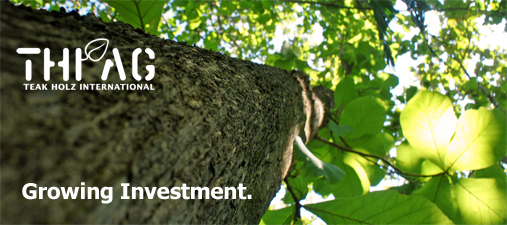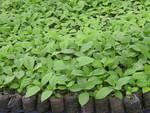Life cycle of a plantation
The economic cycle within the life cycle of a teak plantation
Preparation of the soils
The plantations acquired were previously used as cattle pasture. Apart from the quebradas (natural streams protected by nature protection legislation), the shrubbery and natural undergrowth is removed manually, which, while involving higher personnel costs, nevertheless benefits the soil and is the most valuable way of preparing the soil from an ecological point of view.
From sowing to planting the seedlings
In the meantime, the seeds are raised in jiffy pots, small seedling containers, in which they grow into seedlings. Only the best seed quality is used, supplied by a Costa Rican state institution.
In April, when the annual rains start, the seedlings are planted out, with 1,100 seedlings planted per hectare. This density has been confirmed by experience and ensures the best possible development of the plants.
Caring for the teak plant
In order to encourage the trees to develop in the best possible way, the plantation is kept permanently free of undergrowth by means of mulching. This prevents other plants drawing the nutrients from the soil and casting shade over the young teak plants once they have been planted out. The undergrowth is mown and left as mulch to fertilise the forest soil, providing natural protection to the forest floor and creating an important habitat for the natural fauna.
The high rainfall and the previous extensive cultivation as pasture land have left behind a soil that in terms of mechanical characteristics and depth is extremely well suited but is low in nutrients. In order to provide the teak tree with the soil conditions for optimum growth and rapid development, the nutrients that are lacking are continuously fed to the soil.
A team of forestry experts trained in Austria organises and monitors the processes on the plantations. A trained permanent local work force is employed for the whole year, while at peak times additional use is made of temporary workers from the local region.
Thinning and harvesting
The value of the wood increases with the diameter of the tree. Intensive plantation cultivation allows thinning to take place considerably later without retarding growth speed. As soon as growth is observed slowing down as a result of competition between plants, despite the intensive plantation cultivation, trees are removed by multiple thinnings.
In relation to the growing progress on each plantion the harvesting (final cut) can start within the periode fithteen to twenty year after planting. The valuable wood will be sold in form of logs and blocks worldwide.
Reforesting
The harvest is followed by the preparation of the soil for reforesting and the new cultivation of the plantation areas.










